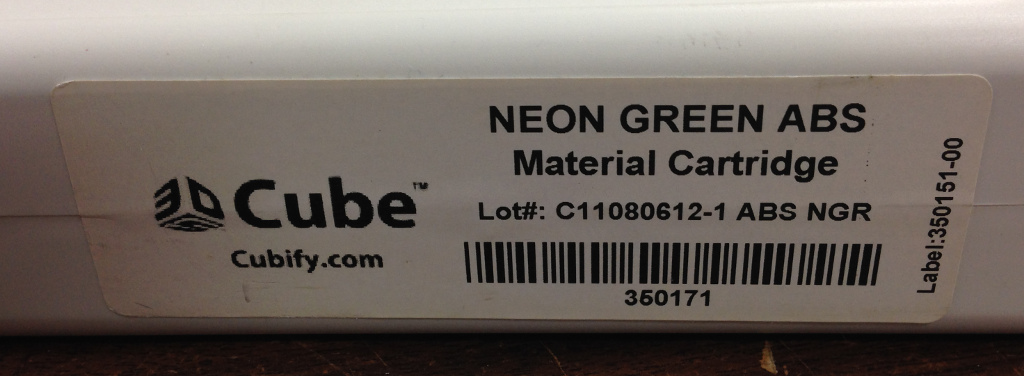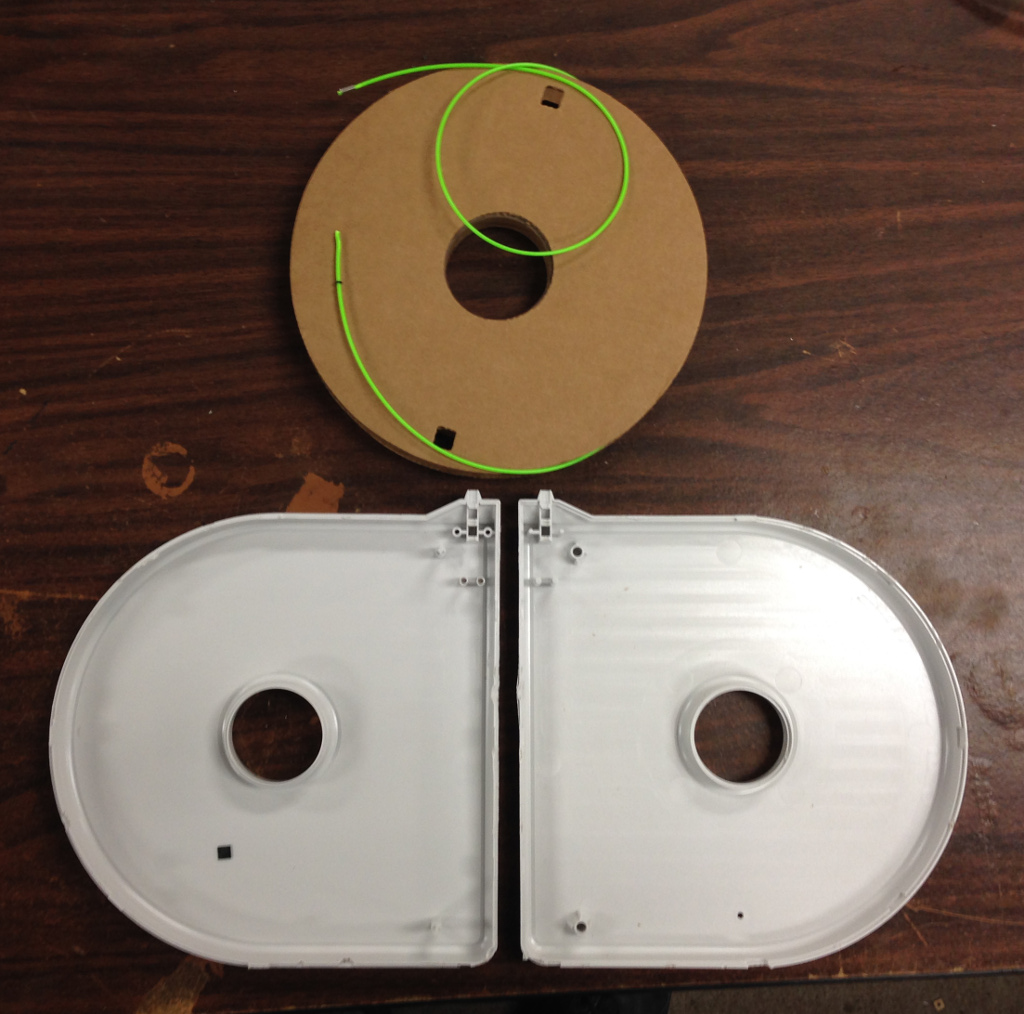A friend sent me a used filament cartridge from his 3DS Cube a while back, as I had heard that they are ‘chipped’ similarly to Stratasys cartridges. Sure enough, there’s a 1-wire chip on one corner of the cartridge. Opening the cartridge requires almost destroying it. The two halves are actually solvent welded together, and […]
A friend sent me a used filament cartridge from his 3DS Cube a while back, as I had heard that they are ‘chipped’ similarly to Stratasys cartridges.
Sure enough, there’s a 1-wire chip on one corner of the cartridge.
Opening the cartridge requires almost destroying it. The two halves are actually solvent welded together, and inside is a ridiculously small cardboard spool of filament. One user determined that the printer will only allow 320 grams of filament to be used before declaring the cartridge to be empty. At $50 per cartridge, this isn’t quite as bad as Stratasys pricing, but it’s still insanely expensive for what is targeted as being a hobbyist machine.
With the Stratasys cartridges at least, the cartridge is sealed with a gasket all the way around the edge where the halves mate, and the interior is packed with desiccant packets. No such environmental protection exists on the Cube cartridge – there’s an open hole in one side (with a threaded brass insert whose purpose escapes me), and there’s an o-ring on the exit to keep the filament in place (if you accidentally pushed the filament back into the cartridge, you would need to break open the cartridge to fish out the end).
Unlike the Stratasys cartridges, there is no PCB board at all – the tiny 2-wire EEPROM is just a tiny SFN package measuring only 6mm on a side. Unfortunately, I actually broke it in half when busting open the cartridge, so I can’t actually attempt a read on it. But at least I verified that it is in fact a Maxim DS28E01 1Kb (that’s kilobit, mind you) 1-wire EEPROM. Oh, and it’s SHA-1 protected, just as I’ve heard that the Stratasys uPrint cartridge EEPROMs are. I’ve read that the printer can be tricked into running generic filament by leaving the EEPROM in place and simply telling the machine “that’s okay, continue printing anyway” when it alerts that filament is out. Newer firmware versions are said to eliminate this workaround but it appears that somebody has managed to break the cartridge encryption. They created (or at least claim to have) a USB controlled dongle to fake full cartridges so that bulk filament can still be used no matter what the firmware version. At $167 for the very cheapest version, though, I’d be inclined to just tear out the original electronics and run everything with a RAMPS board if possible.






So if you are stuck with such a printer (nobody should buy it in the first place. EVER! It sets a bad example.),
you have to read the eeprom of the full cartrige including signature to later write back that value to an empty cartridge?
(As long as the printer is offline and doesn’t remember serial numbers of cartridges.)
I don’t know specifically how the Cube works, but in the case of Stratasys machines, yes, that’s what needs to be done. However, there’s also an additional step required – each EEPROM also has a unique serial number that the printer remembers. Even if you reprogram a Stratasys cartridge to have the same EEPROM contents as it did when full, you need to make the machine forget that it ever saw that serial number as well before you can re-use the cartridge.
The DS28E01 EEPROM on the Cube cartridge also has an additional layer of protection available, though I don’t know if it is actually being used. Writes back to the EEPROM can be authenticated by means of a secret key – while this key can be reset, the printer would know that the key had changed (as writes are no longer functioning), and could declare the cartridge to be invalid as a result.